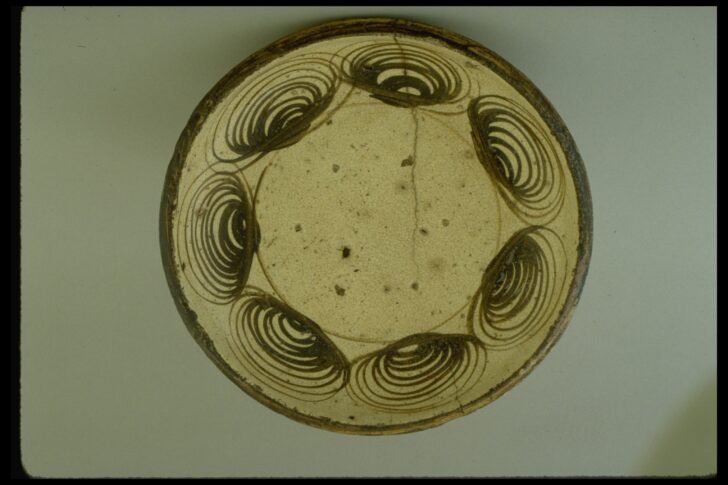Seto Ware Oil Plate
Japanese

Description
One of the world's oldest and largest ceramic production sits remaining today, Seto has produced both high quality tea ceremony wares and utilitarian pottery. This plate, called ishi zara (stone plate) for its durable body and impenetrable glazed stone-like surface, is a good example of the everyday type of Seto ware. The ring-like patterns--a common decoration on ishi zara--are said to be modeled after horse's eyes. This large plate was used for serving generous portions of food.
---
Seto Ware plate
Japan, Edo period
(1615–1868)
late 18th–19th century
Stoneware, iron, and white slip painting with clear glaze
Gift of Dr. Walter R. Parker, 1942.5
One of the world’s oldest and largest ceramic production sites remaining today, Seto has produced both high-quality tea ceremony wares and utilitarian pottery. This plate, called ishi zara (stone plate) for its durable body and impenetrable glazed stone-like surface, is a good example of the everyday type of Seto ware. The ring-like patterns—a common decoration on ishi zara—are said to be modeled after horse eyes. This large plate was used for serving generous portions of food.
(6/28/10)
Subject Matter:
One of the world’s oldest and largest ceramic production sites remaining today, Seto has produced both high quality tea ceremony wares and utilitarian potteries. This plate, called ishi zara (stone plate), is a good example of the everyday type of Seto ware.
Physical Description:
This plate has durable body and protective glazed surface. Seven brown ring-like patterns (said to be modeled after horse eyes) decorate the inner rim of the large plate. The outermost edge is ringed in brown.
Usage Rights:
If you are interested in using an image for a publication, please visit https://umma.umich.edu/request-image/ for more information and to fill out the online Image Rights and Reproductions Request Form.